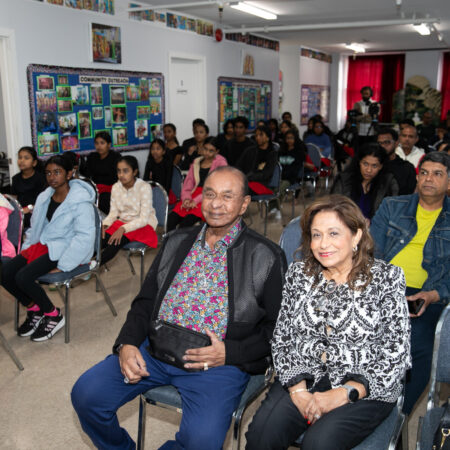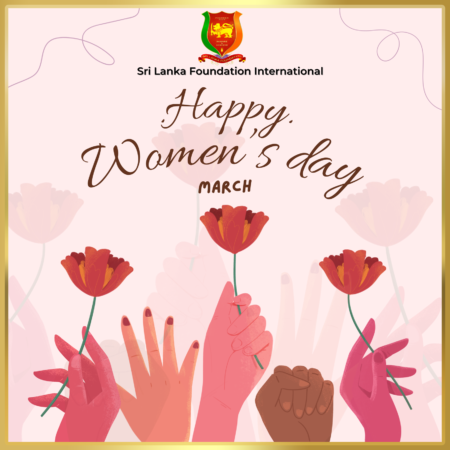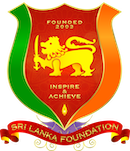What we don’t see
Will a good number of soldiers, tanks and artillery ensure victory in a war? These are outward aspects of a war which alone are insufficient, says Sri Lanka’s Master Strategist Gotabaya Rajapaksa. He says the key to triumph in a war is political will and strategy.
In an exclusive interview to V K Shashikumar, Indian Defence Review, Gotabaya reveals the crucial decisions of the Government of Sri Lanka (GoSL) that led to the successful completion of Sri Lankan Armed Forces’ combat operations against the LTTE.
He says it was President Mahinda Rajapaksa’s determination that ultimately helped the army defeat the Tamil Tigers.
‘President Mahinda Rajapaksa took several brave decisions. In the final analysis, it was the cumulative effect of those decisive, brave decisions that enabled Sri Lankan Armed Forces (SLAF) to liquidate the Liberation Tigers of Tamil Eelam (LTTE)’
He says, ‘Usually in a military operation the world outside the conflict theatre, domestic and international, see only soldiers fighting. They see tanks, guns, armoured vehicles, artillery weapons and men and women in battle fatigues.’
‘What is not visible to the people, to the outside world, is the strategy. What is also not visible immediately and also not recalled at that moment in time is the history that led to the current context of military operations. What was that context? Eight previous governments led by four different Presidents had failed to end the war. They had failed to rein in the LTTE.
It is not as if those eight governments and four presidents did not have under their command good military leaders and soldiers. In fact, when President Rajapaksa’s government assumed charge in 2005, around 26,000 SLAF soldiers had already sacrificed their lives,’ he adds.
The Supreme Commander
Gotabaya emphasises that political will is the supreme commander. He points to the successful Operation Liberation or Vadamarachchi Operation from May to June 1987 and Operation Riviresa from October to December 1995 to suggest that there was no deficiency in the SLAF.
The Vadamarachchi Operation led to the recapture the Vadamarachchi region in Jaffna peninsula from the LTTE control. This was SLAF’s first conventional combat engagement in Sri Lankan soil after the British colonial rule. During Operation Riviresa (Operation Sun Rays) the SLAF launched a successful assault to wrest control of Jaffna and rest of the Jaffna peninsula from the LTTE.
Using these examples, Gotabaya explains that if at all there was any deficiency then it was on account of inadequate, lax and effete political will.
Gotabaya says, ‘When President Rajapaksa assumed office in 2005, we studied all previous war operations: Eelam War I (1976-1987); Vadamarachchi Operation; IPKF intervention; Eelam War II (1990-1995); Operation Sea Breeze; Operation Thrividha Balaya; Operation Balavegaya I, II; Eelam War III (1995-2002); Operation Riviresa; Operation Jayasikurui; Operation Rivibala; Operation Ranagosa; Operation Rivikirana; and Operation Kinihira I, II, III/IV, V/VI, VII, VIII, IX.
‘The objective of our study was to arrive at conclusive reasons for our previous failures to comprehensively finish the war against the LTTE in the last 30 years. All four previous presidents had resorted to military means and yet had failed. So a political decision was made by President Rajapaksa to comprehensively study all previous war operations and arrive at a solution for every factor of failure or inability to win to the war. For every factor we found a solution,’ he says.
‘We found that there was really no ‘failure factor’ attached to the military. In fact, we realised a simple fact in 2005, that if we launched war operations against the LTTE then we would have to fight with the same military that had fought the LTTE in the last 30 years. We were confident of winning with the same military and its Special Forces and commandos. They were already there! Yet, what explained the inability of the previous governments led by four different presidents to utilize the country’s military strength effectively?’
He adds, ‘We came to the conclusion that the solution was to increase the force strength. The key factor of SLAF’s previous inability to finish the war was inadequate numbers. We realised the expansion of military would have a definitive impact on LTTE.’
Therefore, the second decisive political decision was to expand the SLAF, he reveals.
New doctrine
President Rajapaksa and his advisors detailed and nuanced study of previous war operations was marked by two defining characteristics.
One was attention to detail and the second was their ability to quickly arrive at a clutter-free decision. The third important political decision was a natural corollary of the imperative to expand the SLAF.
‘We realized that all previous operations had failed to hold the ground in the immediate aftermath of battlefield success. President Rajapaksa, therefore, made a political commitment to ensure that his government will find the resources to expand the SLAF to ensure that there were enough armed forces personnel available to hold the ground.’
Gotabaya says the decision to increase numbers actually enabled the SLAF to address two previous âfailure factors’. The first has already been discussed. The second was the previous inability of the SLAF to conduct war operations on a broad front and operate simultaneously across multiple frontlines.
‘When we cleared the Eastern Province, the LTTE said they were not defeated and that its forces had merely staged a tactical withdrawal. The LTTE was confident that the SLAF will not have the troop strength to hold the ground in the Eastern Province. Like all earlier occasions, the LTTE believed that if it opened sporadic operations along the Northern Frontlines then the SLAF will be forced to redeploy enabling LTTE to regain ground in the East. Several opposition party leaders, too, openly declared that the military operations in the East will not be sustainable.’
‘We lulled everyone into believing that the previous status quo will prevail – that the SLAF will fight and win, then the LTTE will open a new front, and the SLAF will redeploy and fail to hold ground and consolidate in the areas where they had attained victory – this would enable LTTE to regain control over lost areas. Little did the LTTE know that we had prepared a new war doctrine! That we were indeed prepared to fight war on a broad front, along multiple frontlines.’
The fourth political calculus of a military victory was President Rajapaksa’s decision to back the formulation of the SLAF’s new war doctrine.
The numbers
Gotabaya says that smaller countries with smaller armies must re-invent the role of the Navy and the Air Force.
‘We had taken the decision to increase the numbers, but we knew it couldn’t happen overnight. So we decided to re-invent the role of the Navy and the Air Force by taking them out of their classical roles and deploying them in ground roles as well. We trained them for ground roles. So, overnight our strength to hold the ground increased. We used the Special Task Force for the same purpose. (The Special Task Force is the Para-Military arm of the Sri Lanka Police, deployed essentially for counter-terrorist and counter-insurgency operations within the country. They are also deployed for close protection Units, providing security for VIP’s and key installations). We also used the Sri Lanka Police Units to buffer the strength of our combined forces deployed to hold the ground,’ he reveals.
They raised a new paramilitary unit called the Civil Defence Force. About 42,000 able bodied men from villages threatened by the LTTE were recruited. These men were trained and were provided with automatic weapons. Their task was to defend their villages from LTTE counter-attacks.
‘In fact, within two weeks in the last month of the war in the summer of 2009 (May) we inducted 5,000 Civil Defence Force members into the Army, ‘ he says.
This was the fifth critical political decision that influenced the course of Eelam IV and put the SLAF on a clear trajectory of military success. This decision enabled the SLAF to single-mindedly focus on the war in the northern jungles against the LTTE.
Gotabaya says, ‘We were able to operate on a broad front. We had the tactical freedom and maneuverability to surround the LTTE from multiple directions. The re-invention of the roles of the Navy, Air Force and Police Units gave us the breathing space to induct and train the new SLAF recruits. With combined forces holding ground in the East and with the SLAF dedicating itself to operations along multiple Northern Frontlines, we not only mounted pressure on the LTTE, but also ensured that we could secure time-bound expansion of the SLAF. We were forming new battalions, new task forces by adding 5,000 troops every month. We tripled the strength of the Army from 100,000 to 300,000 in three years.’
‘In fact, in the 1980s the strength of the military (Army, Navy and Air Force) was 30,000. In 2005 when President Rajapaksa assumed charge the strength was 125,000. Between 2005 and 2009 the figure swelled to 450,000 out of which 300,000 is the strength of the Army. This increase in numbers enabled us to quickly replace those injured in the battlefield. It helped us ensure adequate rest and rehabilitation for our troops. It helped us to mount military pressure on the LTTE,’ he adds.
Decision time
Finally, the battlefield commander fights to win the battle. But it’s the political will that determines success or failure in war. If the battlefield commander is let down by lack of political will or consensus, victory is impossible to achieve.
‘These decisions were taken by the Supreme Commander, the President of Sri Lanka and not by the Army Chief or Battlefield Commanders. It is the Head of State who can decide the course and trajectory of war operations,’ says Gotabaya.
‘All the four previous presidents could not take bold decisions. They were indecisive and were afraid that bold decisions might negatively impact our small economy. They were afraid that our country’s economy could not sustain such a large expansion of the SLAF. In fact, the previous Presidents and political leaders were genuinely apprehensive of a rapid military expansion and its possible impact on the polity.’
‘I remember distinctly the Security Council meeting in Colombo in 2005. I told the President that we must expand the Army by 50,000 as soon as possible. This was mandatory to win the war. The President immediately issued a directive that if that was required to finish the war for once and all times to come we must make the necessary allocation right away. It is this on the spot, tough decision-making that finally led us to victory.’
Gotabaya says that he along with SLAF top brass ‘read’ and analysed the war operations every hour, every day. ‘I could understand and gauge the need and requirements. Any military commander will ask for everything, every possible weapon, every possible inventory. My job was to understand the priorities, rationally organize those priorities in terms of what was really required for victory and flush out needs and requirements that had zero relevance to our objectives.
‘When you go home, tell them of us that we gave our today, for their tomorrow’ is the political mantra that fires the military imagination.
President Rajapaksa was determined to single-handedly absorb the pressure of deaths and causalities. This seventh political decision made all difference for the SLAF.
‘In three and half years nearly 6,000 soldiers were killed. You can imagine the political pressure on the President when body-bags come home from the battlefield. The President was determined to absorb the political pressure generated by battlefield casualties. He committed his Presidency and his government to achieving the objective of winning the war. He demonstrated his courage to continue the war till the military objectives were completely attained. This is what made him different from all previous Presidents. After all, the President is responsible to the people and the fact is that he needs the support of the people to be elected back to power. He knew that he was risking his political career because any other President in his place would have succumbed to the enormous political pressure created by mounting casualties in war operations.’
‘The Muhamalai debacle of April 23, 2008 in which 120 soldiers were killed by the LTTE in just one day could have shaken up any other President. In fact, in this case the LTTE took away the dead bodies of the soldiers. Any other President would have doubted. But President Rajapaksa did not waver from the objective his government had set at the very outset. The war must be won. Not for a single moment in the three and half years of the war did he unplug himself from taking stock of the war operations. Every Wednesday, he attended Security Council meetings from morning till evening. He followed every operational development closely. He was, therefore, able to take correct and timely decisions. He knew we were on the correct track.’
India factor
Rajapaksa clearly outlined the India Factor at the very outset as a key strategic factor that could either influence victory or bring defeat.
‘The President realised that keeping India aligned with us was important. Our study of previous war operations led us to examine in detail the reasons why we could not sustain the successful Vadamarachchi Operations of 1987,’ Gotabaya says.
Brigadier Denzil Kobbekaduwa and Colonel Vijaya Wimalaratne, two SLAF war heroes in the annals of Sri Lanka’s military history had assured the then President, Junius Richard Jayewardene and the then minister of National Security Lalith Athulathmudali that the LTTE will be militarily defeated. But the Government of India intervened through Operation Poomalia, which involved the Indian Air Force air dropping food packets over Jaffna on June 4, 1987. Jayawardene buckled under Indian pressure which led to the signing of the India-Sri Lanka Accord and the entry of Indian Peace Keeping Force (IPKF) in the island nation.
Rajapaksa decided that he would consciously go out of his way to keep New Delhi aligned to Colombo’s military objectives in its battle with the LTTE. He did not want a repeat of Operation Vadamarachchi. During the course of the three and half years of war between 2005 and 2009, there were several instances where India could have forced Lanka to stop the operations, he says.
‘We did not allow such a situation to arise because we kept New Delhi briefed properly. We realised that the UPA government headed by Dr Manmohan Singh was a coalition government and so the Congress party was sensitive to the concerns of its coalition partner, primarily the DMK. We realised the sensitivity of the issue with regard to civilian causalities in Tamil Nadu. So President Rajapaksa ensured that he briefed the Indian leadership. We also ensured that our line communications were open at all times. From our side Basil Rajapaksa (Senior Advisor to the President and Member of Parliament), Lalith Weeratunga (Permanent Secretary to the President) and myself interacted extensively with MK Narayanan (former National Security Advisor, India and now Governor of West Bengal), Shiv Shankar Menon (former Foreign Secretary, India and now National Security Advisor) and Vijay Singh (former Defence Secretary and now Member, Union Public Service Commission). Between the six of us we had continuous dialogues. Whenever there was a sensitive issue, we met and discussed and resolved it. This helped the SLAF to continue its military operations absolutely unhindered,’ he says.
‘A day before the Dravida Munnettra Kazhagam (DMK) supremo and Tamil Nadu Chief Minister M Karunanidhi went on a fast on April 27, 2009 at the Anna Memorial in Chennai protesting against the SLAF offensive against the LTTE, Menon called me on my cell phone at 4.30 pm. The Indian team wanted to visit Colombo for urgent talks. I went straight to the President’s office and got his sanction and called Menon back within five minutes. Within six hours of Karunanidhi going on fast we could defuse the crisis in Tamil Nadu by issuing a statement announcing the end of combat operations and shelling inside the âNo Fire Zone’, which led to the Tamil Nadu Chief Minister ending his fast. This was a classic example of quiet, corrective diplomacy between two officially designated government teams, Gotabaya reveals’
‘The manner in which President Rajapaksa tackled India was a key factor of our military success. We knew that only India influences us militarily. India is a huge power in our neighbourhood and our proximity to Tamil Nadu with 60 million Tamils sensitive to what’s going on in Sri Lanka made the situation extremely complex for us. We knew that while other countries could or would resort to economic sanctions, only India had the power to militarily influence the course of our war operations. So it is to the credit of President Rajapaksa that he was successful in keeping New Delhi aligned with Colombo’s military objectives,’ he adds.
Goodwill hunting
Gotabaya says the ninth decisive political decision was to ensure sustenance of the war operations tempo by forging public goodwill.
‘The President repeatedly emphasized in almost all national security council meetings that sustaining a war campaign over a long period of time will require public support. He directed his government officers and ministers to ensure public support for the war campaign. Public support was also critical to ensuring that we succeeded in getting new recruits for the SLAF. âLet’s not use war as an excuse for failing to provide good governance and undertaking development activities’. That was his clear one line directive.’
‘Therefore, even as the war campaign continued in the North, the government embarked on mega development projects in other parts of the country. The government also became one of the biggest employers in the country by recruiting for various public sector enterprises. In the course of the three and half years of the war, the President also effected a pay hike for public sector and government employees. He managed the economy in such a manner that he did not allow the public support for the war campaign to diminish.’
The final political decision was an internal political choice that President Rajapaksa made. In 2005 when he took over as President he was entrusted with the responsibility of stitching together a coalition alliance to ensure political stability. This factor led to his decision to create a jumbo cabinet. He increased the cabinet, the biggest in Sri Lanka’s history, by providing positions to leaders from all political parties in the coalition alliance. ‘His only condition was that he wanted a stable government till the end of the war,’ says Gotabaya.
V K Shashikumar is a senior journalist who has received accolades for investigative journalism. He was a recipient of the Ramnath Goenka Excellence in Journalism Awards for 2007-08.
http://www.sify.com
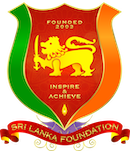





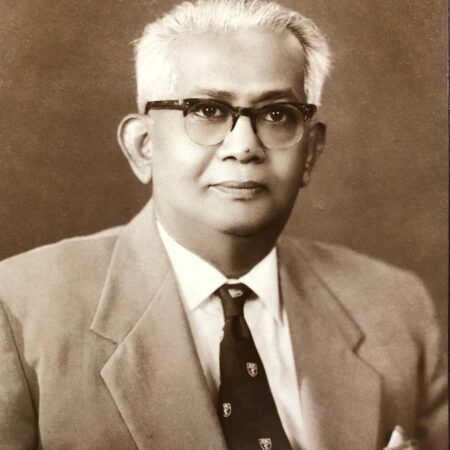
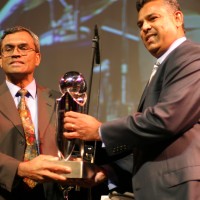



![TV-Poster-All-Exhibition-Sri-Lanka-in-Focus-USA-2025[1]](https://www.srilankafoundation.org/wp-content/uploads/2025/04/TV-Poster-All-Exhibition-Sri-Lanka-in-Focus-USA-20251-450x450.jpg)
